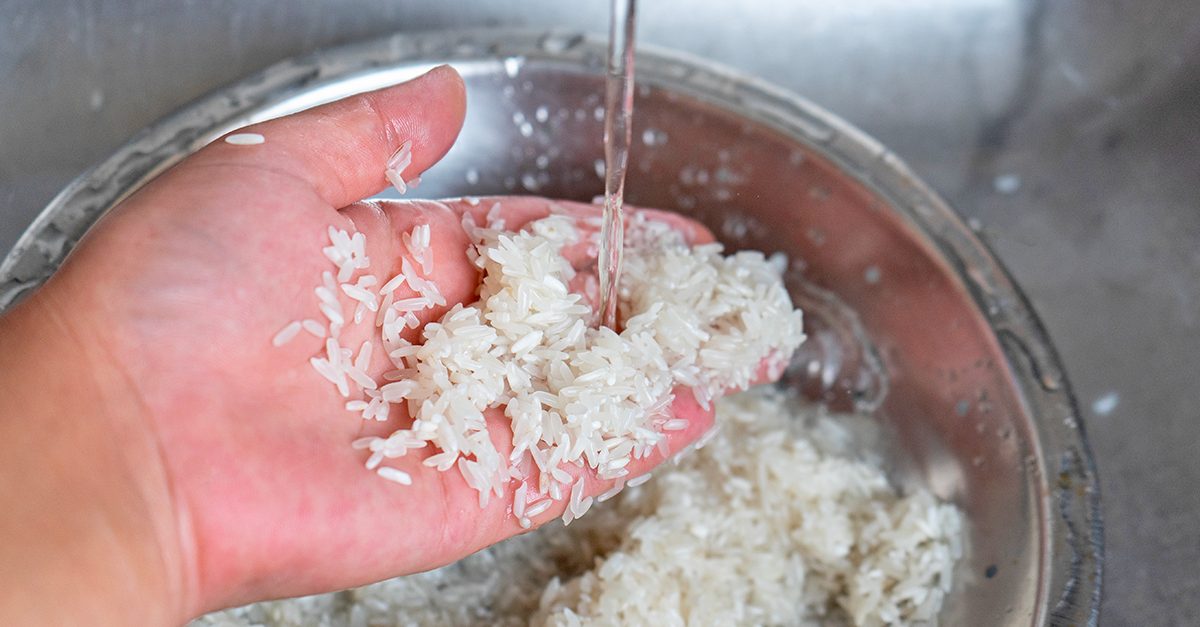8 Common Foods You’re Probably Cooking Wrong
Lots of us are probably aware by now that we’ve been cooking pasta wrong all this time, but there are apparently all sorts of ways of screwing up cooking simple ingredients.
;)
Lots of us are probably aware by now that we’ve been cooking pasta wrong all this time, but there are apparently all sorts of ways of screwing up cooking simple ingredients.
Read on to find out which common foods you’ve (probably) been cooking wrong, and for some professional chef’s tips on how to get it right.
1. Putting fish into a cold pan

Most of us have probably struggled with fish sticking to the pan when we try to sear it. Chef Robert Irvine says that there are two parts to searing success with fish: the fish has to be dried thoroughly first, and the pan has to be at such a high heat that the oil is smoking.
His tip is to wrap the fish in paper towels to dry it while the pan is heating up. If the moisture soaks the towels, wrap again in fresh ones. Once the fish is dry, season it with salt and lay it carefully in the hot oil. Let it sit for two to four minutes, depending on how thick it is. Don’t move the fish during this time. Once it is done searing on that side, turn it over and finish cooking the fish.
2. Overcooked scrambled eggs

We’ve all had overcooked scrambled eggs – watery, stodgy and rubbery. There is a way to avoid this, and create fluffy, tasty scrambled eggs every time. Chef Canary says that the main thing to do is to watch the pan carefully, cook until just right, then plate them.
Eggs trap heat, which is why they will continue to cook even after they are removed from the pan. To get perfect eggs, Canary says the trick is to slightly undercook them.
3. Cooking bacon on the stove top

Some people just can’t seem to get the hang of frying bacon on the stovetop. It either comes out watery and insipid, or burnt and crispy.
Chef Canary recommends cooking bacon in the oven rather than in a pan. It’s simple – line a baking sheet with aluminum foil, and try cooking at 400 deg F for around 15 minutes. This should get you near the kind of bacon you like, but it can take a little longer or shorter, depending on the thickness of the slices and how crispy you want them.
4. Chopping Asparagus

Do you spend ages chopping the tough, woody base of asparagus stems off? Chef Canary has a simple, time saving hack: asparagus will naturally break at the right spot if you bend it. Take a spear, hold it with thumb and forefinger at either end, and bend it down. It will snap just above the inedible, woody bit at the bottom of the spear.
5. Cooking rice following the packet instructions

If you follow the cooking instructions for rice that are on the back of the packet or bag, you’ll end up with a clumpy mess that sticks to the bottom of the pan.
Chef Canary shares his rice cooking guidelines with us for perfect rice every time:
• Wash your rice thoroughly. Put it in a mixing bowl and add water until covered. Stir with a whisk, and you’ll see the water turn white and cloudy. Stain the rice and repeat until the water runs clear. • After the rice is rinsed off, add enough water to cover it in a pan or the pot of your rice cooker. Put the lid on, and just leave it to soak in the water for around 45 minutes. • After soaking, drain the rice once more, then for brown rice add water until it is two finger-widths above the top of the rice. For white rice, add a finger-width and a half of water above the top of it. Shut the lid and let your pan or rice cooker do the rest. No more measuring!
6. Burning garlic

Garlic tastes great, and has lots of health benefits, but did you know we’re likely cooking it wrong?
Chef Martorano says that garlic should be browned until it’s a light brown colour, and not cooked until it’s black and bitter.
7. Adding sugar to tomato based sauces

Some people add sugar to their home made marinara sauce because the acidity of the tomatoes can make it taste a bit tart. Chef Martorano says this is a big mistake. He recommends using a good tomato variety like a San Marzano, then it won’t be necessary to add sugar.
8. Overcooked Pasta

A lot of us cook our pasta until it is soft, then add it to the pasta sauce. Chef Irvine reckons that’s a mistake, and the pasta should be cooked until it’s very al dente, then added to the sauce while still firm.
Irvine suggests keeping one cup of pasta water and adding it to the sauce to continue cooking the pasta, and keep the sauce at the right consistency.
;Resize,width=767;)

;Resize,width=712;)
;Resize,width=712;)
